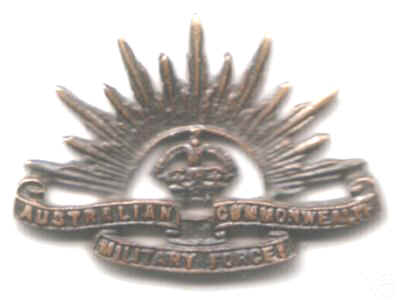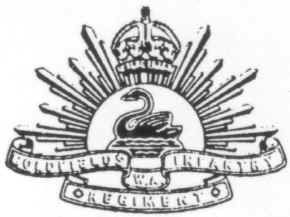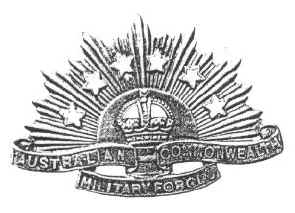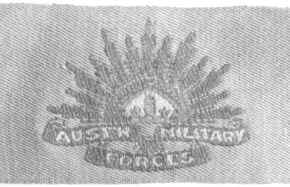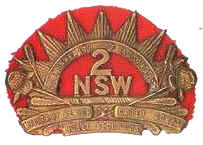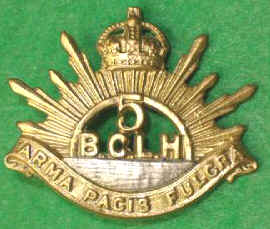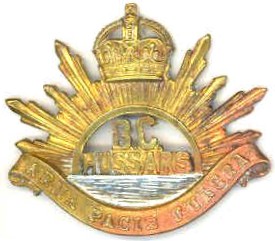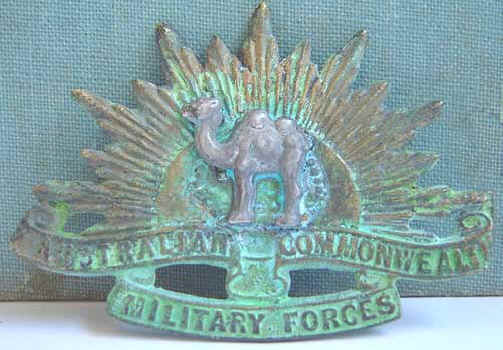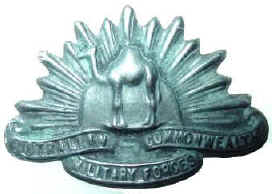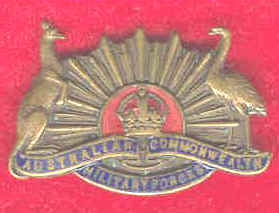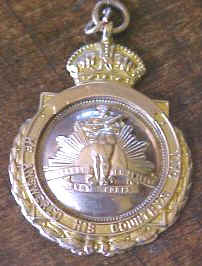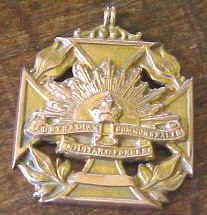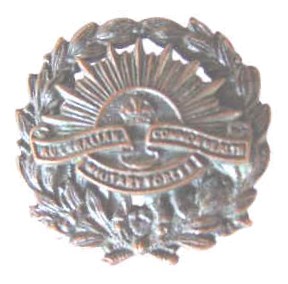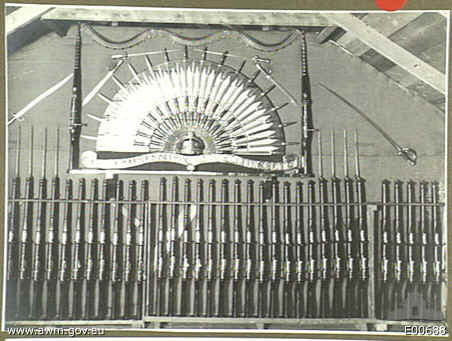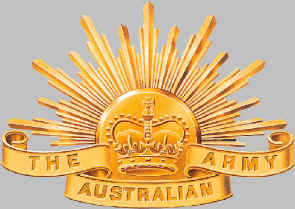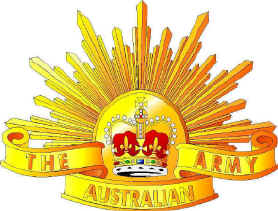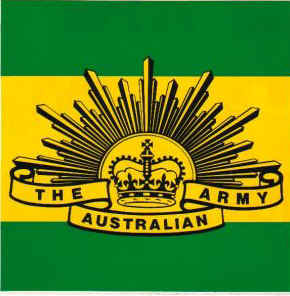 |
|
|||
|
|
||||
|
More details on Australia's most famous badge |
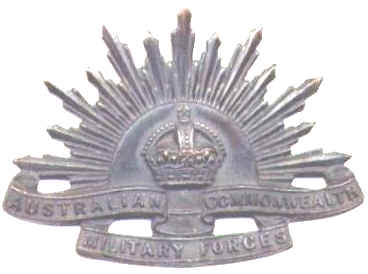 |
General Service badges for
the AIF were manufactured by several firms.
Although the standard always reached the Government regulated minimum standard some were better than the minimum standard. This is an example of one of the better quality ones. It was manufactured in Birmingham, England. |
| This is another version from the same era. Note the lack of detail and the variations in the crowns. | 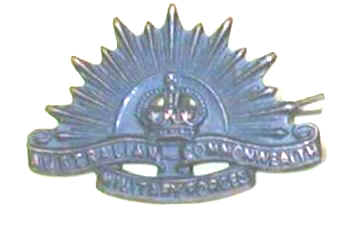 |
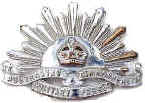 |
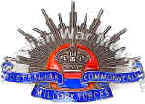 |
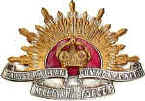 |
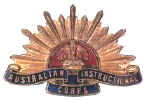 |
|
Chromium plated as worn by RAAC post 1945 |
Enameled | Commonwealth HQ Staff 1904 | Australian Instructional Corps c.1930 |
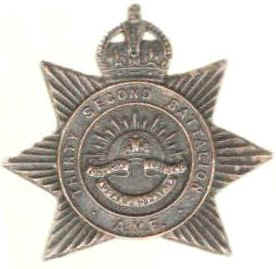 |
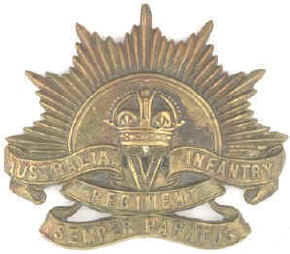 |
|
Some units incorporated the Rising Sun into their badge, as did 32nd Bn AMF. |
5th Australian Infantry Regiment (5AIR) also managed to use the Rising Sun |
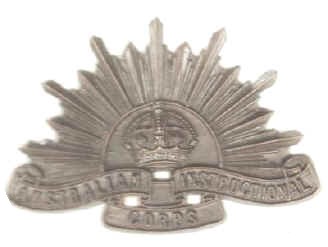 |
Australian Instructional Corps This unit originally started with a standard pattern General Service (Rising Sun) badge embellished with the addition of enamel. Later (circa 1930/39) they got their own badge (note the changes to wording on the scroll). |
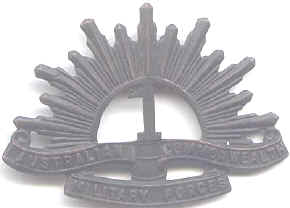 |
|
|
|
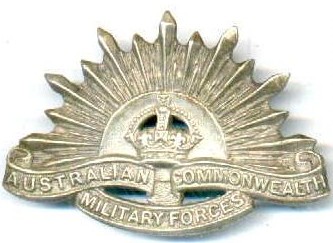 |
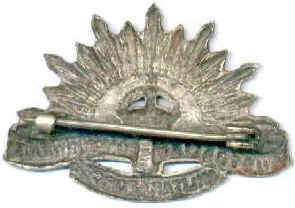 |
| Pressed silver General Service Badge (Rising Sun) as issued to the nurses in WW1. Note the pin fixing which was also a variation from the twin lugs and fixing bar of the male badge. | |
|
|
|
| Goldfields Infantry Regiment 1903/12 | WW2 variation of unknown origin |
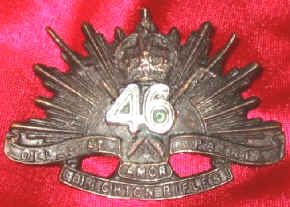 |
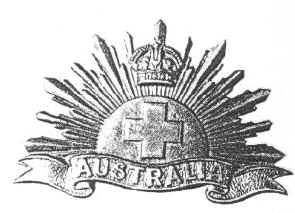 |
| 46 Battalion The Brighton Rifles | British Red Cross (Australian Div) circa 1916 |
|
|
The 27th was a South Australian Militia regiment, and in the period of
1930 to 1942, it had a Scottish nature.
After WW2 the 27th Scottish South Australian continued. The ties to the Seaforth Highland Regiments were strong and the kilts worn were the same. |
|
The hat badge is based on the Australian Rising Sun badge, with the stag's head of the Seaforths in the centre, and 27 between the antlers on the sun. The scroll reads, South Australian Scottish Regiment, and with the Latin phrase, Primus Inter Pares, meaning First Among Equals. This badge was designed to be worn as a Sporran and Bonnet Badge. Captain John Francis PLACE designed this badge and the collar badges of the 27th Battalion and submitted the designs on the 22nd of January, 1938. The badges were then manufactured by G A Miller & Sons Ltd. of Sydney, New South Wales |
|
|
|
|
| This AUST'N MILITARY FORCES badge was woven on khaki. The sunburst was blue and the crown was red. It was issued to AIF volunteers in training when the Armistice was declared in 1918. | Because of the huge appeal of the Rising Sun badge many units and some Corps tried to work it into their badge designs. This is an early version of a collar badge for an Australian armoured unit. |
|
Cadet Corps Rising Suns |
| In pre WW1 Australia all eligible males were required to do some sort of military training. It started at age 12 with Junior Cadets and progressed through all of your life in one form or another until age 45. |
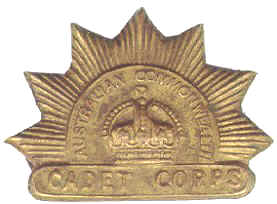 |
|
|
note that early Cadet Corps Unit badges only had 7 points, not 13 |
|
|
The badge, above left, is the one worn by junior Cadet Corps units. |
Badge of the NSW Senior Cadet Corps formed in 1907. This was based on the 2nd pattern of RSB not the more recent 1904 version |
|
|
This
badge is featured in Cossum's The Rising Sun Badge book (pg 15 RS52).
The badge is possibly a school cadet cap or collar (in the absence of
any unit name or number it is probably a collar badge).
Nice enamel and gilt badge with flat lugs on the reverse. |
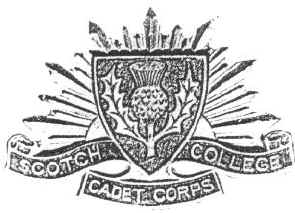
|
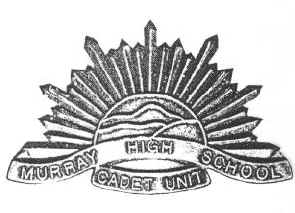 |
|
Scotch College Cadet Corps |
Murray High School Cadet Unit Tasmania |
|
Non Australian Rising Suns |
|
|
|
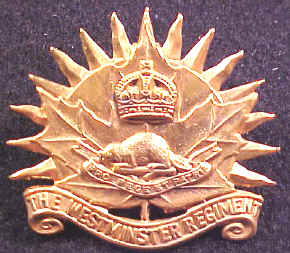 |
| Canadian Rising Sun. 5th British Columbia Light Horse Regiment. This is the similar badge and same motto of the WW2 British Columbia Hussars. see below |
|
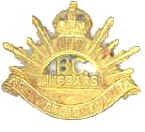 |
|

|
|
Hat and collar badge set for the Canadian Unit, British Columbia Hussars |
|
|
Unofficial Rising Suns |
|
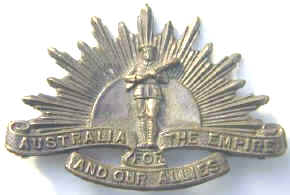 |
<<< Another unofficial RSB from WW1. The motto reads "Australia for the Empire and our Allies"
|
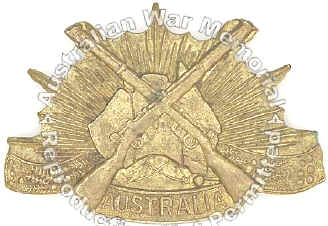 |
Unofficial,
rough cast Rising Sun badge with
three pin fastenings soldered to the reverse, featuring an image of
Australia under two crossed rifles, bordered above by a Rising Sun.
In the centre of the base of the badge, between the rifles, is the text 'AUSTRALIA' and slightly above the text, on either side, is a border of wattle. The badge appears to be an example of trench art. |
|
|
|
Original genuine AIF badge with the Imperial Camel Corps camel added later. These are believed to be the first of the Camel Corps unofficial badges. |
|
|
|
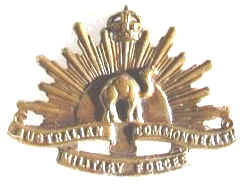 |
|
Unofficial Imperial Camel Corps (Anzac Section) |
Unofficial Australian Camel Corps |
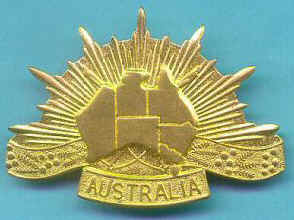 |
|
|
This badge was created post WW2 to use on surplus "Hats, khaki fur felt" that were being sold to the public. |
Unofficial WW2 Rising Sun badge |
| Many individuals, and some Units, copied or altered the RSB to create "sweetheart" badges to send home. | |
|
|
|
| The centre of this fob ornament is a soldier superimposed on an ACMF "Rising Sun" badge. It is surrounded by the words "He Answered His Country's Call". Encased in a laurel wreath it is ensigned with the Tudor Crown. | An ACMF General Service badge (Rising Sun) superimposed on a Cross Patté (or possibly a Maltese Cross) in a wreath. Manufactured as a fob ornament. |
|
Rising Sun sweetheart badges. |
|
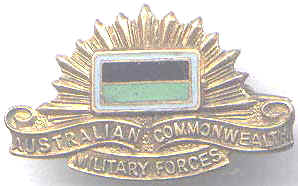 |
|
 |
The
Rising Sun motif was used on all sorts of privately made items including
this "match safe" ( a metal cover for cardboard or timber
matchboxes).
As is plainly seen the people who made these items did not always pay attention to accuracy of design. |
|
|
A unique representation of
the 'Rising Sun' in the Armoury of the 1st Australian Tunnelling Company
as it was devised by 3691 Sapper J Vawden, a member of the Unit.
At the top is a German machine belt and cartridges; the two rapier like bayonets beneath it are French. |
| On each side of the sun is a German Cavalry Mauser carbine; the sword on the right was found in Ypres and was used by a French cavalryman; the bayonet on the left is an old type of English sword bayonet; modern short bayonets and German cartridges form the sun; the crown and title scroll are patterned out of German shell cases. | |
Current Australian Army Rising Sun Badge
Proudly worn by soldiers of the 1st and 2nd Australian Imperial Forces in both World Wars, the 'Rising Sun' badge has become an integral part of Digger tradition. The distinctive shape, worn on the upturned brim of a slouch hat, is readily identified with the spirit of ANZAC. Yet despite the badge's historic significance, well researched theories as to its origin are more numerous than its seven points.In 1902 a badge was urgently sought for the Australian contingents raised after Federation for service in South Africa during the Boer War. Probably the most widely-accepted version of the origin of this badge is that which attributes the selection of its design to a British officer, Major General Sir Edward Hutton, KCB, KCMG, the newly appointed Commander-in-chief of the Australian Forces. He had earlier received as a gift from Brigadier General Joseph Gordon, a military acquaintance of long standing, a "Trophy of Arms" comprising mounted cut and thrust swords and triangular Martini Henri bayonets arranged in a semicircle around a brass crown. To Major General Hutton the shield was symbolic of the co-ordination of the Naval and Military Forces of the Commonwealth. A refurbished replica of the shield is on display in the main foyer of Army Office in Canberra. The original design, created and produced in haste for issue to the contingent departing to South Africa, was modified in 1902 and 1904.
Twenty years later, the badge was again modified to incorporate the Federation Star and Torse Wreath from the original 1902 version of the badge and the scroll wording changed to "Australia" In the 75th anniversary year of the ANZAC landings at Gallipoli there arose a desire to return to the traditional accoutrements worn by Australian soldiers during the World Wars and which clearly identify the Australian Army. The recent change coincides with the 90th anniversary of the Army which was commemorated on 1st March 1991. |
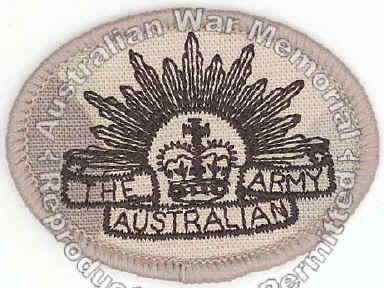 |
Rising
Sun Badge SAS Afghanistan Woven Rising Sun badge in Disruptive Pattern Desert Uniform (DPDU) fabric as worn on brassards used by SAS Regiment troops in Afghanistan. The
Rising Sun badge, which features the title 'THE AUSTRALIAN ARMY', is
embroidered in dark brown cotton.
|
